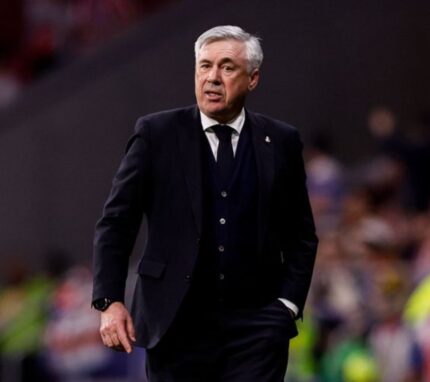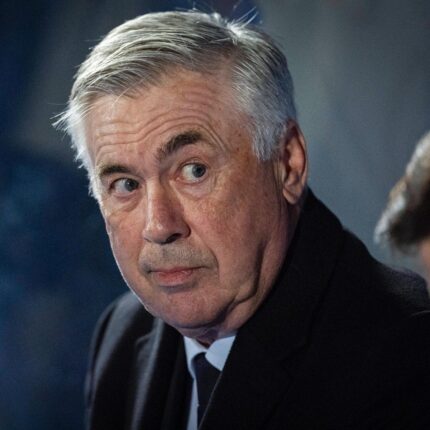The opening minutes of the Euro 2024 clash between England and Denmark saw a flurry of activity, with England asserting early dominance. Kieran Trippier won a free kick in the defensive half, setting the tone for a physical and tactical battle. A brief delay ensued as Kyle Walker received medical attention, but play resumed swiftly. England’s defense remained alert, catching Denmark’s Rasmus Højlund offside in the 12th minute.
Phil Foden’s attempt in the 13th minute was England’s first real chance, but his left-footed shot from the right side of the box went high and wide. The breakthrough came in the 18th minute when Harry Kane, with his trademark clinical finish, scored a left-footed shot from the center of the box, putting England ahead 1-0. This goal exemplified England’s strategic precision and Kane’s sharp form, giving them a crucial lead.
Denmark’s Response and Hjulmand’s Equalizer
Denmark responded with determination, pushing forward and testing England’s defense. Joakim Mæhle was caught offside in the 21st minute, and Christian Eriksen’s blocked shot in the 23rd minute highlighted Denmark’s attacking intent. Jonas Wind’s header in the 25th minute forced a save from England’s goalkeeper, showcasing Denmark’s aerial threat.
The breakthrough for Denmark came in the 34th minute. Morten Hjulmand’s powerful right-footed shot from outside the box found the bottom left corner, leveling the score at 1-1. This goal, assisted by Victor Kristiansen, was a testament to Denmark’s resilience and Hjulmand’s precision. The equalizer energized the Danish side, and they continued to press, earning a corner and testing England’s defense repeatedly.
Intense Midfield Battle and Late First-Half Chances
The remainder of the first half was characterized by an intense midfield battle, with both teams vying for control. England’s Declan Rice committed a foul in the 35th minute, and Denmark’s Jonas Wind won a free kick shortly after. Denmark maintained their offensive pressure, with Morten Hjulmand’s shot blocked in the 38th minute and Joachim Andersen’s header going just high following a corner.
England had their chances too. Phil Foden’s left-footed shot from outside the box was saved in the 41st minute, and another attempt in added time was too high. Denmark’s Pierre-Emile Højbjerg also tested the goalkeeper with a long-range effort in the 44th minute. The first half ended with the score tied at 1-1, setting the stage for a thrilling second half as both teams displayed their attacking prowess and defensive capabilities.
Tactical Analysis: England’s Second Half Adjustments
In the second half, England made several tactical adjustments that aimed to break the 1-1 deadlock against Denmark. One of the most notable changes was the substitution of Trent Alexander-Arnold with Conor Gallagher in the 54th minute. This move aimed to bolster England’s midfield presence and provide a more robust defensive stance against Denmark’s attacks. Gallagher’s immediate impact was felt both defensively and offensively, although he quickly received a yellow card for a foul, highlighting his aggressive approach to breaking Denmark’s rhythm.
England’s strategy seemed to pivot towards more aggressive pressing and rapid transitions. Phil Foden’s shot hitting the post in the 56th minute exemplified England’s quick counter-attacking potential, but despite multiple attempts by Bukayo Saka and Declan Rice, England struggled to find the back of the net. The introduction of fresh legs like Eberechi Eze and Jarrod Bowen in the 69th minute was a clear attempt to inject more pace and creativity into the attack. However, despite these efforts and several near-misses, including a shot by Ollie Watkins saved by Kasper Schmeichel, England couldn’t secure the decisive goal.
Defensive Resilience and Key Saves
Denmark’s defensive resilience was a cornerstone of their performance in the second half. Despite being caught offside twice early on, Denmark’s defense, led by Andreas Christensen and Kasper Schmeichel, remained steadfast. Schmeichel’s crucial saves, including a key stop against Ollie Watkins’ shot in the 71st minute, showcased his experience and reflexes under pressure.
Denmark also made strategic substitutions to maintain their defensive solidity and provide fresh energy. The introduction of Alexander Bah and Mikkel Damsgaard in the 57th minute helped to counter England’s aggressive play. Denmark’s ability to absorb pressure and launch counter-attacks was evident as Mikkel Damsgaard’s shot was saved in the 67th minute, keeping the Danish hopes alive. However, despite several attempts, including a missed shot by Pierre-Emile Højbjerg in the 85th minute, Denmark couldn’t capitalize on their opportunities to take the lead.
Key Moments and Fouls: Managing Pressure
The second half was characterized by numerous fouls and tactical battles, reflecting the high stakes of the match. England’s Conor Gallagher’s yellow card in the 61st minute and Joakim Mæhle’s booking in the 73rd minute were indicative of the physical nature of the game. The frequent stoppages for fouls and free kicks disrupted the flow, with both teams fighting for control in the midfield.
Denmark’s substitutions, such as bringing on Christian Nørgaard and Andreas Skov Olsen in the 82nd minute, aimed to freshen up their squad and maintain the intensity. However, Nørgaard’s yellow card in the 87th minute underscored the aggressive midfield battle. The closing minutes saw Denmark committing several fouls, reflecting their attempts to stifle England’s late surges. Despite these efforts, both teams managed to hold their lines, resulting in a balanced but fiercely contested draw. The match ended with a scoreline of 1-1, highlighting the evenly matched tactical and physical approaches from both sides.














